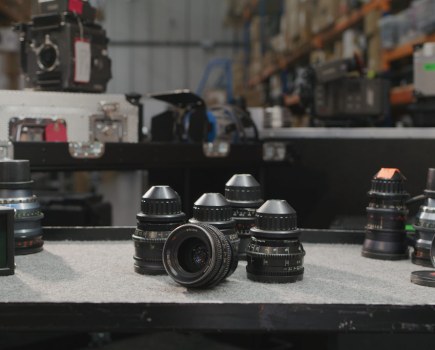Despite its name, the Sony NEX-C3 is more than a simple redesign of the now discontinued NEX-3. Its sleek polycarbonate body makes it the smallest and lightest digital interchangeable-lens camera, with an APS-C size sensor, currently available. It is fractionally smaller than the Sony NEX-5.
 Build and Handling
Build and Handling
There are few physical changes to the camera?s controls, with the main one being that the shutter-release button and on/off switch are now integrated, much as it is on many DSLR cameras. This has helped reduce the size of the camera?s grip, but without making it awkward to hold. The battery and memory card now have separate sockets, which has been allowed Sony to reduce the thickness of the camera fractionally. Improvements to the electronics and firmware mean that the battery life is now longer, with the ability to take up to 400 shots, which is 20% more than the original NEX-3.
With the Sony 16mm f/2.8 pancake lens attached, the NEX-C3 feels very much like a compact camera ? which is where the ?C? designation comes from. This may imply that as well as having a compact range, Sony might also take the NEX system down another route at some point in the future.

One of the major concerns I had when I tested the first NEX cameras was that the minimal design used very few buttons. The NEX-C3 has the same control arrangement as the NEX-3 and NEX-5, but each of the rear buttons can be customised, giving quick access to frequently used features. This improves upon the firmware update that Sony brought out after the release of the NEX-3 and NEX-5 that allows the left, right, up and down directional controls to be customised. I found that this small change makes a big difference, although I feel another button or two to be could be added without compromising the minimalist design of the NEX range.
Sensor Size
Although it is the design of the Sony NEX-C3 that will attract consumers, for enthusiast photographers there is one major reason to be excited about the new Sony NEX-C3 ? its 16.2-million-pixel APS-C-size CMOS sensor. Sony has described this sensor as a ?tweaked? version of the same resolution sensor used in the Sony Alpha 55, which in turn is thought be the same basic sensor that is used in the Nikon D7000 and Pentax K-5. The fact that this highly regarded sensor is being used in a compact system camera (CSC) shows Sony?s ambition and can only be good news for those who have so far resisted the temptation of purchasing a CSC.
Image Quality
From what I have seen so far, image quality from the NEX-C3 certainly looks like it will live up to expectations, with a great deal of detail recoverable in shadow areas without introducing huge amounts of noise. Detail resolution looks as good as you would expect from a 16.2-million-pixel sensor, and I?m looking forward to seeing how the camera performs in our resolution chart test.

One thoughtful new feature is the oddly named ?peaking?. When switched on, this helps manual focusing by highlighting the areas that are currently in focus. There is also a new range of seven picture effects labelled partial colour, retro, high-contrast mono, high key, pop colour, toy camera and posterisation. These are fun to play with, although they are clearly aimed more at the point-and-shoot market.
At the time of going to press, Sony had not released a launch date or price for the Alpha NEX-C3.
READ SONY NEX-C3 NEWS STORY HERE
See AP 25 June for a full test of the Sony NEX-C3








